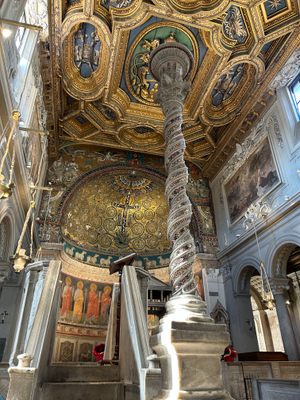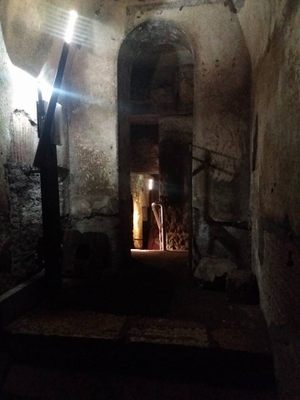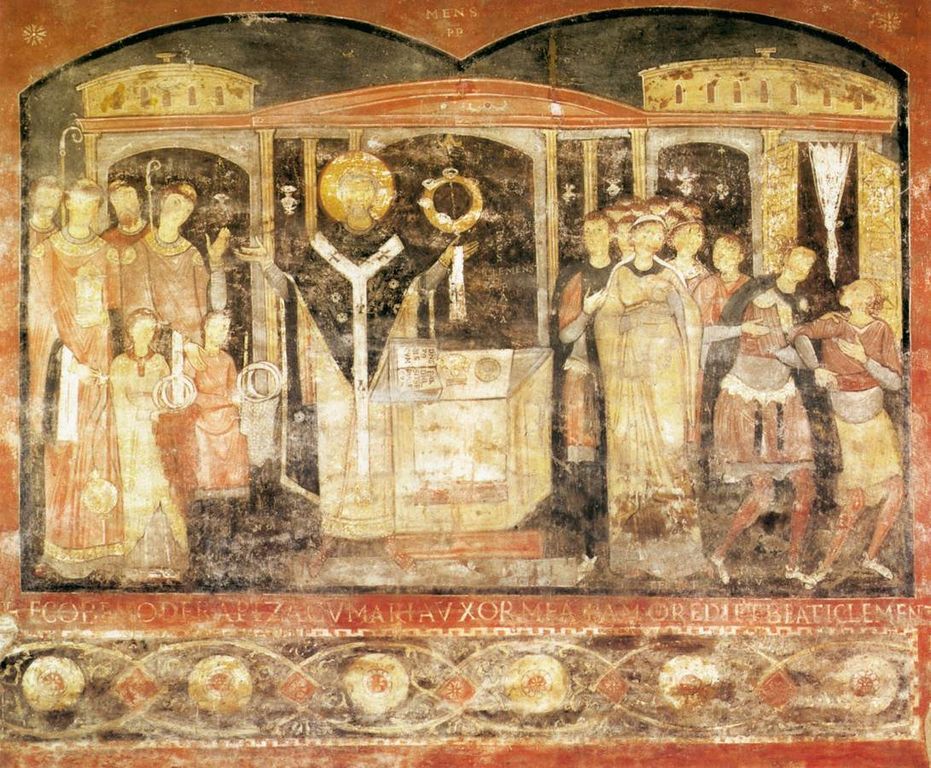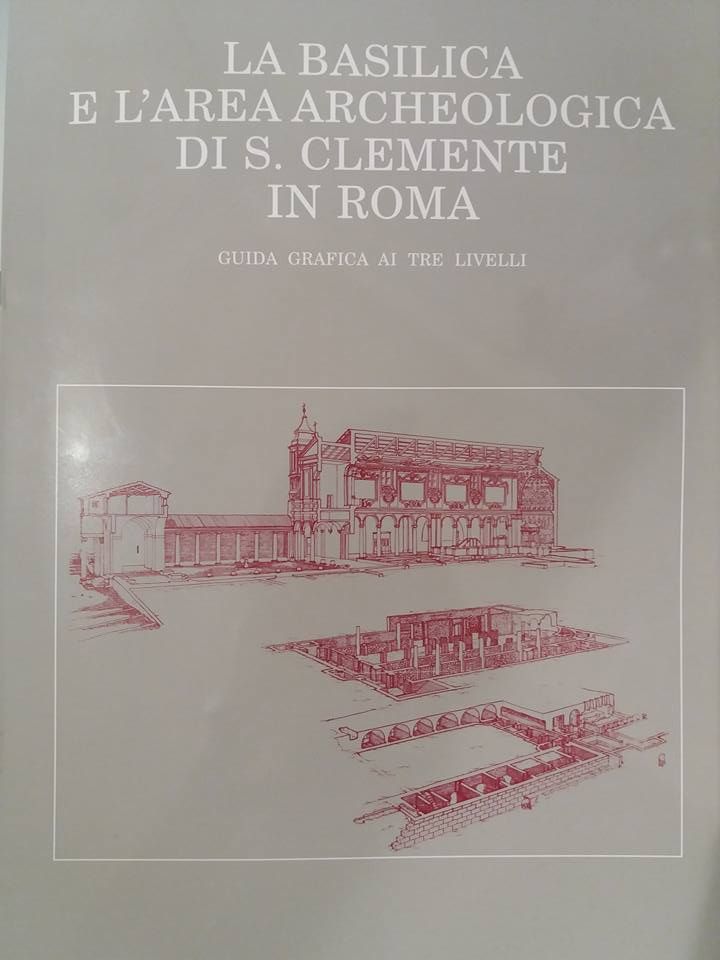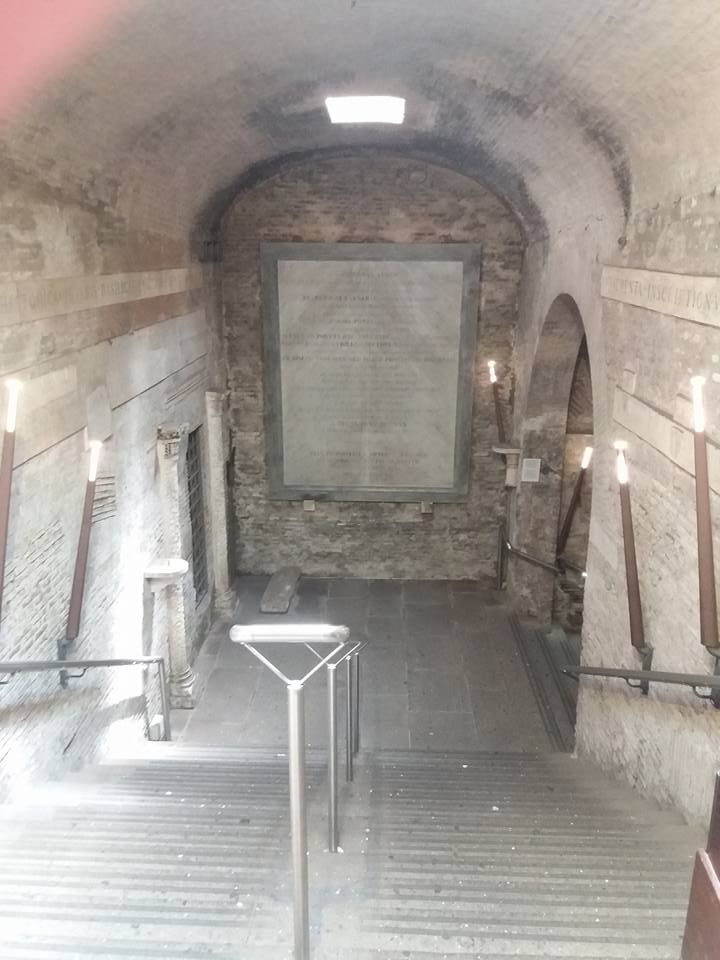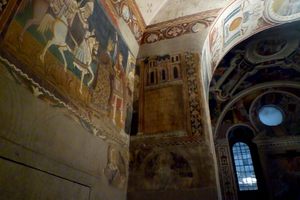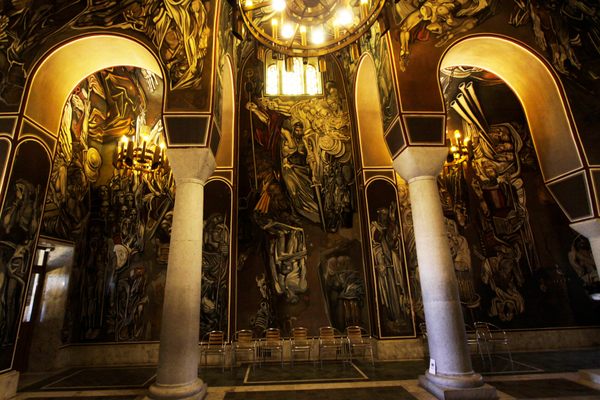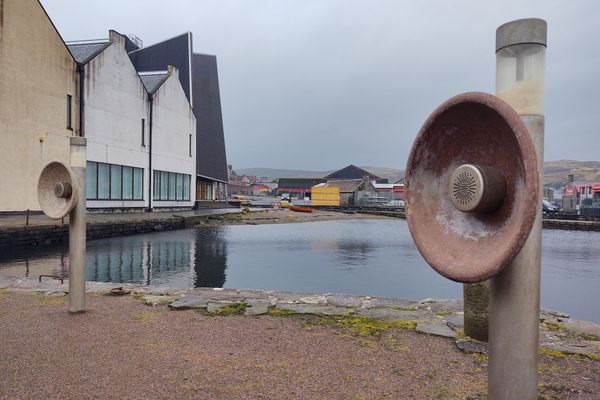About
The Basilica of San Clemente is one of the more interesting sights in the city of Rome. The 12th-century basilica was built over a 4th-century basilica, which in turn was built over a temple to the oriental god Mithras from the 1st century CE.
The lower basilica is adorned with 11th-century frescoes that depict miracles and stories from the lives of Saint Clement and Saint Alexius. (Notice, for example, the beautiful representation of the Miracle of the Black Sea with the marine animals floating around Saint Clement's underwater chapel.) But one fresco is unlike anything you'd expect in an ancient Christian church. This rare and rather rude fresco displays dialogue in both Latin and the vernacular Italian language, providing a valuable testimony to the evolution of language in Italy.
Two scenes are presented in this fresco. The upper scene centers around Saint Clement, celebrating Mass. On the right, a woman is looking toward her husband, the Roman prefect Sisinnius, who, out of jealousy and spite, has come to find out why his wife has been too frequently absent. For his jealousy, he is struck blind and his loyal Christian wife intercedes with Saint Clement to have his sight restored. Sisinnius, however, is deeply insulted by the punishment he has received and orders his servant to seize Saint Clement. The second scene, in the bottom section of the fresco, with its now fading inscriptions, humorously describes what happens next.
A second miracle occurs, in that Sisinnius and his servants are fooled into tying their ropes around a column, rather than the saint. Sisinnius, depicted wearing a toga, looks upon the scene and shouts in exasperation—and in an early example of vernacular Italian—"Fili de le pute, traite!" ("Pull harder, you sons of whores!")
Meanwhile, his two assistants, Albertel and Carvoncelle, say to each other, "Albertel, traite!" and "Falite dereto co lo palo, Carvoncelle!" ("Albertel, pull!" and "Try using a lever from behind, Carvoncelle!") Saint Clement, rather too solemnly, looks upon the absurd scene and comments in Latin, "Duritiam cordis vestri saxa trahere meruisti" ("Given the hardness of your heart, you are condemned to carry such a burden").
Related Tags
Know Before You Go
Below the lower basilica visitors will have the opportunity to visit one of the most interesting Mithraea in ancient Rome, a shrine to the oriental god Mithras. The upper basilica can be visited for free. The excavations, which include the lower basilica, can only be visited during opening hours, which are 9 a.m. to 12:30 p.m. and 3 p.m. to 6 p.m. Monday through Saturday, and 12:15 p.m. to 6 p.m. on Sundays.
Flavors of Italy: Roman Carbonara, Florentine Steak & Venetian Cocktails
Savor local cuisine across Rome, Florence & Venice.
Book NowCommunity Contributors
Added By
Published
November 20, 2018




